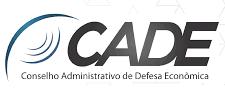AGENDA
• Uses of Assessments
• Resource Cost and Justification • External Feedback
Key Challenges
Future Outlook
INTRODUCTION TO IMPACT ASSESSMENTS AT CADE
Definition and Importance
Impact assessments are systematic approaches to understanding the effects of CADE’s regulatory interventions, contributing to the development of informed and effective policies.
CADE's Strategic Objectives
Aimed at strengthening communication with the public and promoting accountability in CADE’s actions, creating a bond of trust between the institution and society.
HISTORY AND MOTIVATIONS FOR IMPLEMENTATION
Start of Impact
Assessments
Impact assessments began to be formally implemented by CADE in 2020, in response to growing demands for transparency in public policy.
Global Trends and UNDP
Consultancy
CADE aligned its practices with international trends, with support from UNDP consultancy to develop methodologies that reflect global best practices.
Strategic Motivations
Assessments aim not only to increase transparency but also to strengthen the legitimacy of CADE’s actions in a context of growing demand for data and evidence.
STRATEGIC USES OF IMPACT ANALYSIS
Transparency and Accountability
Assessments are published in annual reports and serve as communication tools that demonstrate CADE’s commitment to transparency in its operations.
Limitations in Budget
Discussions
Although assessments support communication strategies, their use in budget discussions is still limited and requires greater recognition of their value.
Examples of Use
Concrete cases where assessments informed strategic decisions — whether in institutional communication or public policy development.
RESOURCE EFFICIENCY AND ECONOMIC JUSTIFICATION
• Internal Implementation Model: CADE conducts research and publishes studies using data from previously decided cases, optimizing resource use.
• Investment Justification: Investing in impact assessments responds to the growing demand for accountability in government actions and helps communicate benefits effectively.
• Return on Investment: Benefits include enhanced institutional legitimacy and increased public trust — both essential for the effectiveness of any regulatory authority.
EXTERNAL RECEPTION AND ABSENCE OF SIGNIFICANT CRITICISM
• Academic Criticism of Methodologies: Lack of in-depth critical analysis of the adopted methodologies, especially regarding the current methodology.
• Opportunities for Academic Partnerships: Collaborating with universities and research centers can enhance assessment practices and promote a more complete approach.
• Challenges in Communicating Results: The complexity of communicating assessment results demands ongoing improvements and regular ex-post studies to strengthen credibility.
MAIN CHALLENGES IN IMPLEMENTING AND CONDUCTING ASSESSMENTS
• Methodological and Data Challenges: Limitations in data availability lead to reliance on assumptions that may affect the quality of assessments.
• Limitations of Measured Effects: Focusing on direct effects, especially on prices, restricts understanding of the full scope of interventions and of advocacy.
• Risks in Case Prioritization: Prioritizing cases with more tangible impacts may result in neglecting areas that require deeper analysis, which is not the case in Brazil.
FUTURE OUTLOOK AND DEVELOPMENTS
Alignment with OECD International Practices CADE seeks to continuously adapt to OECD guidelines to ensure the quality and relevance of its assessments.
Inclusion of Deterrent Effects
Adding these effects poses a methodological challenge but can provide a more holistic understanding of the impact of interventions.
Development for Digital Markets
New methodologies should be created to address the specificities of digital markets, including the measurement of quality and innovation.
CONCLUSION AND RECOMMENDATIONS
Lessons Learned CADE should continue emphasizing transparency and the need for qualitative and/or quantitative ex-post analyses.
Strengthening
Recommendations
Supporting the external review from independent academia ad research institute may generate richer and more accurate insights (dynamic, deterrence, etc.).
Sector Prioritization
Including social and economic criteria in assessment methodologies can enrich the approach and enhance its relevance.















